- All
- Product Name
- Product Keyword
- Product Model
- Product Summary
- Product Description
- Multi Field Search
Views: 0 Author: Site Editor Publish Time: 2025-10-17 Origin: Site








The remote work revolution has fundamentally transformed how millions of professionals approach their daily work environments. What began as a temporary pandemic response has evolved into a permanent fixture of modern employment, with hybrid and fully remote arrangements now representing the standard rather than the exception. This shift has created unprecedented demand for home office furniture that balances professional functionality with residential aesthetics, ergonomic performance with budget constraints, and immediate availability with long-term durability.
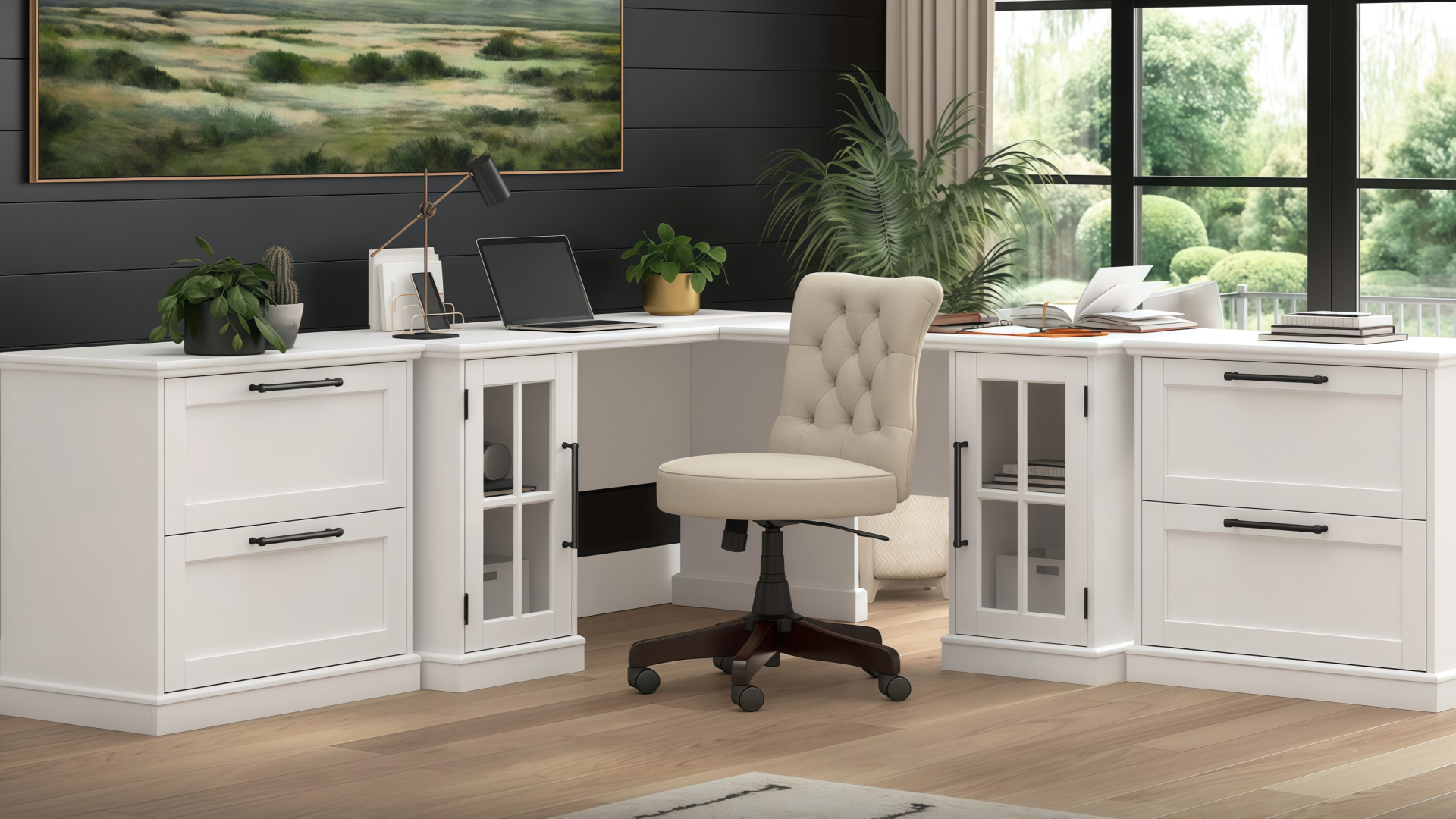
For remote workers navigating the transition from temporary kitchen table setups to permanent home workspaces, furniture selection presents both opportunity and challenge. Unlike corporate offices where facilities departments specify standardized furniture, home office workers must independently evaluate options, balance competing priorities, and make investments that directly impact their daily productivity and physical comfort. The financial responsibility falls entirely on individual workers or small business owners, making budget office furniture considerations paramount without sacrificing the quality necessary for sustained professional performance.
Three brands have emerged as dominant players in the home office furniture market, each approaching the challenge from distinct perspectives: IKEA brings Scandinavian design efficiency and global retail infrastructure; Wayfair leverages digital marketplace breadth and customer review transparency; Amazon Basics applies supply chain mastery and Prime membership benefits to furniture essentials. Understanding how these brands differ in product quality, price positioning, assembly requirements, customer support, and overall value proposition enables remote workers to make informed decisions aligned with their specific circumstances.
This comprehensive analysis examines each brand's strengths and limitations across critical selection factors. We will explore their signature home office products, compare pricing and quality expectations, evaluate assembly and delivery experiences, and provide strategic guidance for matching brand selections to different remote work scenarios. Whether you're establishing your first dedicated home office, upgrading from makeshift arrangements, or optimizing an existing workspace, this analysis will equip you with the insights necessary to maximize your furniture investment.
IKEA has built a furniture empire on the principles of democratic design—making quality furniture accessible to broad audiences through manufacturing efficiency, flat-pack distribution, and self-assembly models. For home office furniture seekers, IKEA offers compelling advantages rooted in decades of design refinement and supply chain optimization. The brand's approach emphasizes functional simplicity, modular flexibility, and aesthetic restraint that translates particularly well to residential work environments where professional functionality must coexist with home living aesthetics.
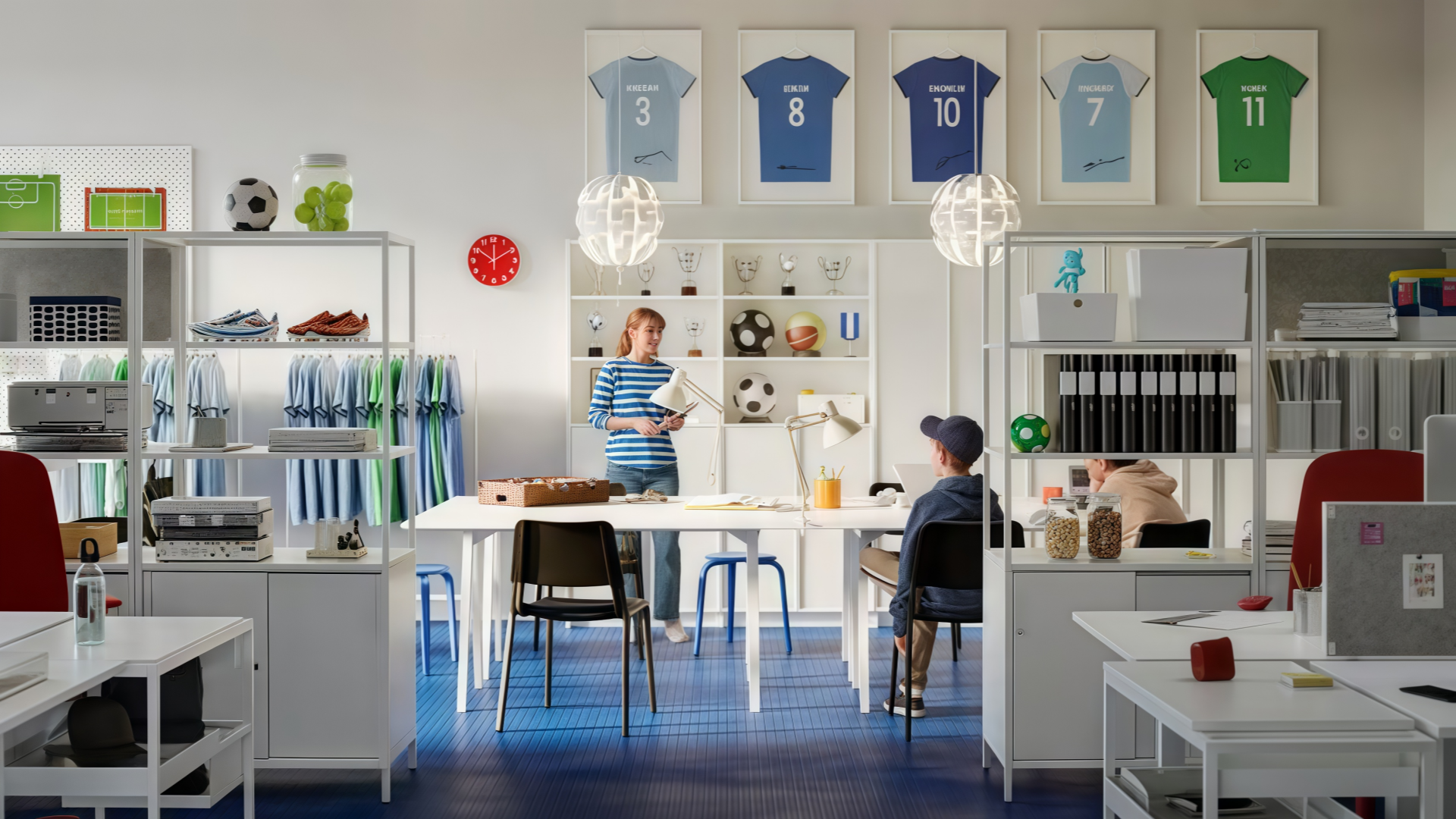
The IKEA home office collection spans multiple product lines addressing varied space constraints and budget levels. The Bekant series delivers height-adjustable desk solutions at price points significantly below specialized ergonomic furniture manufacturers, making sit-stand functionality accessible to budget-conscious remote workers. Bekant desks feature electric height adjustment, cable management solutions, and multiple size configurations accommodating both compact spare-bedroom offices and dedicated home workspaces. The straightforward Scandinavian aesthetic integrates seamlessly into residential environments without the industrial appearance that characterizes many commercial office products.
For task seating, IKEA's Markus chair has achieved near-cult status among budget-conscious remote workers seeking ergonomic support without premium pricing. The high-back design provides lumbar support and head-neck cushioning during extended work sessions. While the adjustment mechanisms lack the sophistication found in Herman Miller or Steelcase products, the Markus delivers functional comfort at approximately one-tenth the cost of premium ergonomic chairs. The chair's durability has proven surprisingly robust, with many users reporting five-plus years of daily service—exceptional value at its modest price point.
Storage solutions represent another IKEA strength particularly relevant to home office applications. The Kallax shelving system offers modular storage that adapts to changing needs through interchangeable inserts, bins, and drawer units. This flexibility proves valuable for remote workers whose document management and supply storage requirements evolve over time. The Billy bookcase series provides traditional shelving in multiple dimensions and finishes, accommodating both professional reference materials and personal items within unified furniture pieces that maintain residential aesthetic coherence.
IKEA's showroom experience provides tangible advantages over purely digital furniture shopping. Customers can physically test chairs, evaluate desk heights, assess finish quality, and experience furniture scale before purchasing—eliminating much of the uncertainty inherent in online furniture buying. The ability to immediately purchase and transport smaller items provides instant gratification unavailable through shipping-dependent alternatives, though larger pieces like desks typically require delivery scheduling or vehicle rental for transport.
However, IKEA's model does present notable limitations for home office applications. Assembly requirements demand significant time investment and mechanical aptitude—a desk purchase translates to two or three hours of assembly labor using provided tools and often-cryptic pictorial instructions. Quality control inconsistencies occasionally result in missing hardware, damaged components, or misaligned pre-drilled holes that complicate assembly. The particleboard construction predominant throughout IKEA's product lines limits durability compared to solid wood alternatives, with edge wear and structural fatigue appearing after several years of intensive use.
Availability challenges frustrate customers during high-demand periods, with popular items frequently showing "out of stock" status both online and in physical locations. The brand's just-in-time inventory management optimizes warehouse efficiency but creates inconvenience for customers requiring immediate furniture acquisition. Return and exchange processes, while generally customer-friendly, require transporting bulky items back to physical stores—a significant deterrent given furniture packaging dimensions and weight.
Wayfair has revolutionized furniture retail by creating a comprehensive digital marketplace aggregating thousands of manufacturers, brands, and product options within a unified shopping experience. For home office furniture buyers, Wayfair's approach offers unparalleled selection breadth, transparent customer review systems, and sophisticated filtering tools that enable precise specification matching. The platform functions less as a single-brand furniture source and more as a curated department store where customers navigate extensive options to identify products meeting their specific requirements.
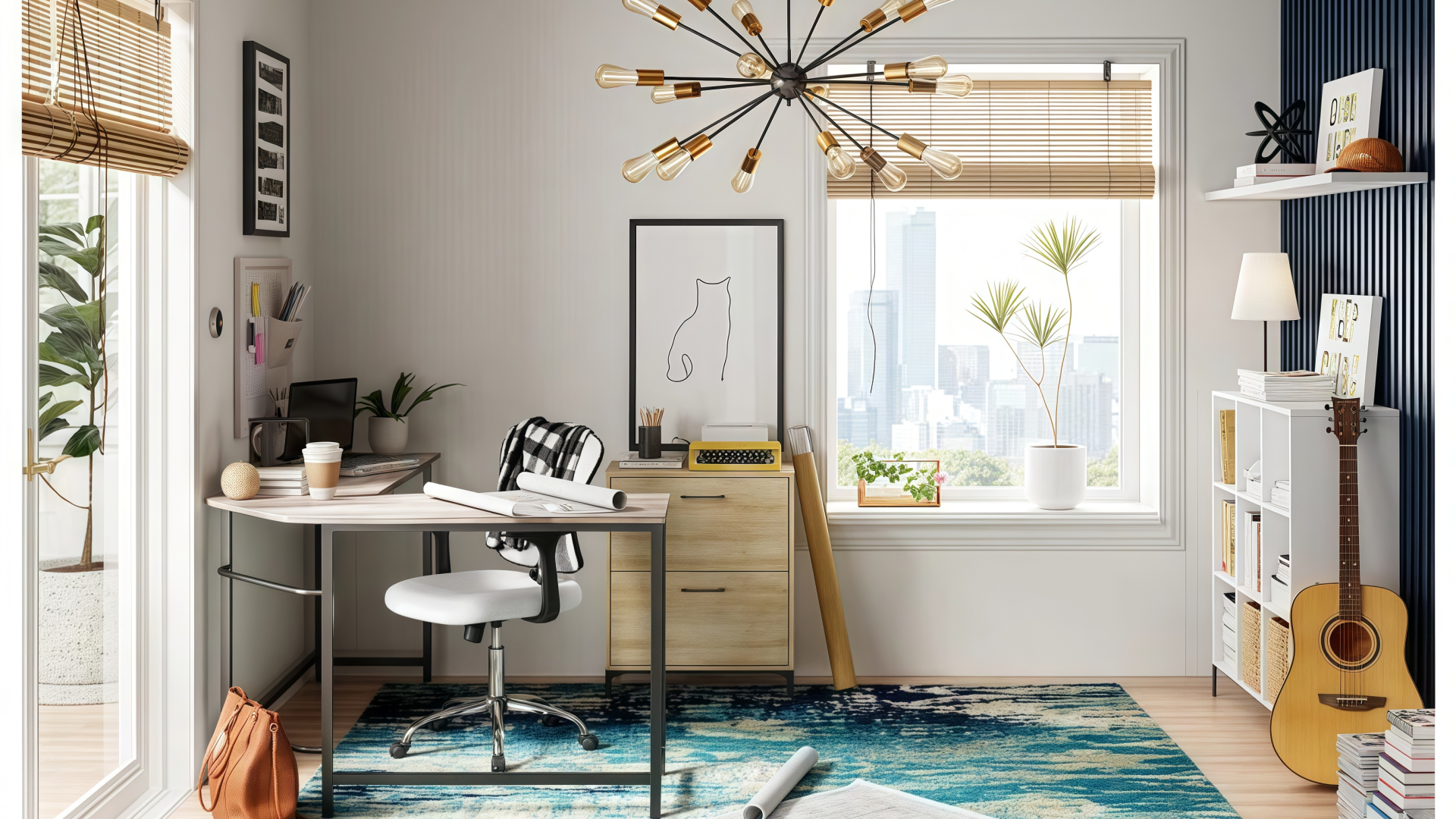
The product selection scope available through Wayfair dramatically exceeds what single-brand retailers offer. A search for "home office desk" returns thousands of options spanning price points from under one hundred dollars to several thousand, styles ranging from minimalist modern to traditional executive, and materials including laminate, solid wood, metal, glass, and composites. This breadth enables customers to specify precise requirements—L-shaped configurations for dual-monitor setups, specific dimension constraints for awkward room layouts, particular aesthetic styles matching existing home décor—and identify products meeting those criteria.
Customer review systems provide transparency unavailable through traditional furniture retail channels. Each product accumulates verified purchaser reviews detailing assembly experiences, quality assessments, durability observations, and customer service interactions. These crowdsourced insights help prospective buyers calibrate expectations and identify potential issues before purchasing. The review authenticity—including photographs uploaded by actual customers showing products in real home environments—offers more reliable guidance than manufacturer marketing materials. Negative reviews highlighting specific problems allow customers to make informed risk assessments rather than discovering issues only after purchase.
Wayfair's private label brands including Wade Logan, Mercury Row, and Latitude Run offer house-brand furniture at competitive price points with quality standards Wayfair directly controls. These lines provide alternatives to IKEA's Scandinavian aesthetic and Amazon Basics' utilitarian functionality, incorporating contemporary design trends and style variations addressing diverse consumer preferences. The Three Posts brand specifically targets traditional aesthetic preferences with furniture evoking established design vocabularies rather than modern minimalism.
The platform's filtering and search capabilities enable sophisticated product discovery based on specific criteria. Users can simultaneously filter by price range, brand, style category, material composition, color, dimensions, weight capacity, and customer rating thresholds. This functionality proves particularly valuable for home office buyers with precise requirements—desks exactly sixty inches wide to fit designated wall spaces, chairs supporting specific weight capacities, storage units matching particular height limitations. The visual search interface displaying grid views of products facilitates rapid evaluation and comparison.
Delivery and logistics represent both Wayfair strengths and occasional frustration sources. The company offers white-glove delivery services for larger items, with delivery teams unpacking, assembling, and positioning furniture while removing packaging materials—a significant convenience for customers lacking assembly skills or time. However, delivery experiences vary considerably based on regional third-party logistics partners, with some customers reporting seamless experiences while others encounter scheduling delays, damage during shipping, or assembly quality issues.
Wayfair's return policy provides customer-friendly flexibility with thirty-day return windows for most products, though the logistics of returning large furniture items creates practical barriers. The company generally issues refunds without requiring item returns for certain damaged or defective products, absorbing loss to maintain customer satisfaction. However, quality control challenges inherent in aggregating thousands of manufacturers occasionally result in products not meeting customer expectations based on online representations.
The price transparency and competitive dynamics of marketplace models generally benefit consumers through better value propositions than traditional retail. Multiple sellers sometimes offer identical products at varying prices, enabling price comparison. Frequent sales events, promotional discounts, and financing options make furniture purchases more accessible to budget-constrained remote workers. However, the overwhelming selection can create decision paralysis, with too many options complicating rather than simplifying furniture selection processes.
| Wayfair Home Office Category | Product Count Range | Price Spectrum | Unique Advantages |
Office Desks | 5,000+ options | $89 - $4,500+ | Vast style variety, precise dimension filtering |
Task Chairs | 3,000+ options | $79 - $2,000+ | Extensive ergonomic range, detailed customer reviews |
Bookcases & Storage | 8,000+ options | $45 - $3,000+ | Customizable configurations, material diversity |
Desk Lamps | 4,000+ options | $25 - $800+ | Comprehensive lighting solutions, style coordination |
File Cabinets | 1,500+ options | $95 - $1,500+ | Traditional and modern designs, locking mechanisms |
Amazon's expansion into furniture through its Amazon Basics private label applies the company's legendary supply chain efficiency and customer service infrastructure to home office essentials. The Amazon Basics approach prioritizes functional reliability over design innovation, competitive pricing over premium materials, and operational simplicity over customization complexity. For remote workers prioritizing budget efficiency and delivery convenience, Amazon Basics offers compelling value propositions backed by the company's customer-centric return policies and Prime membership integration.
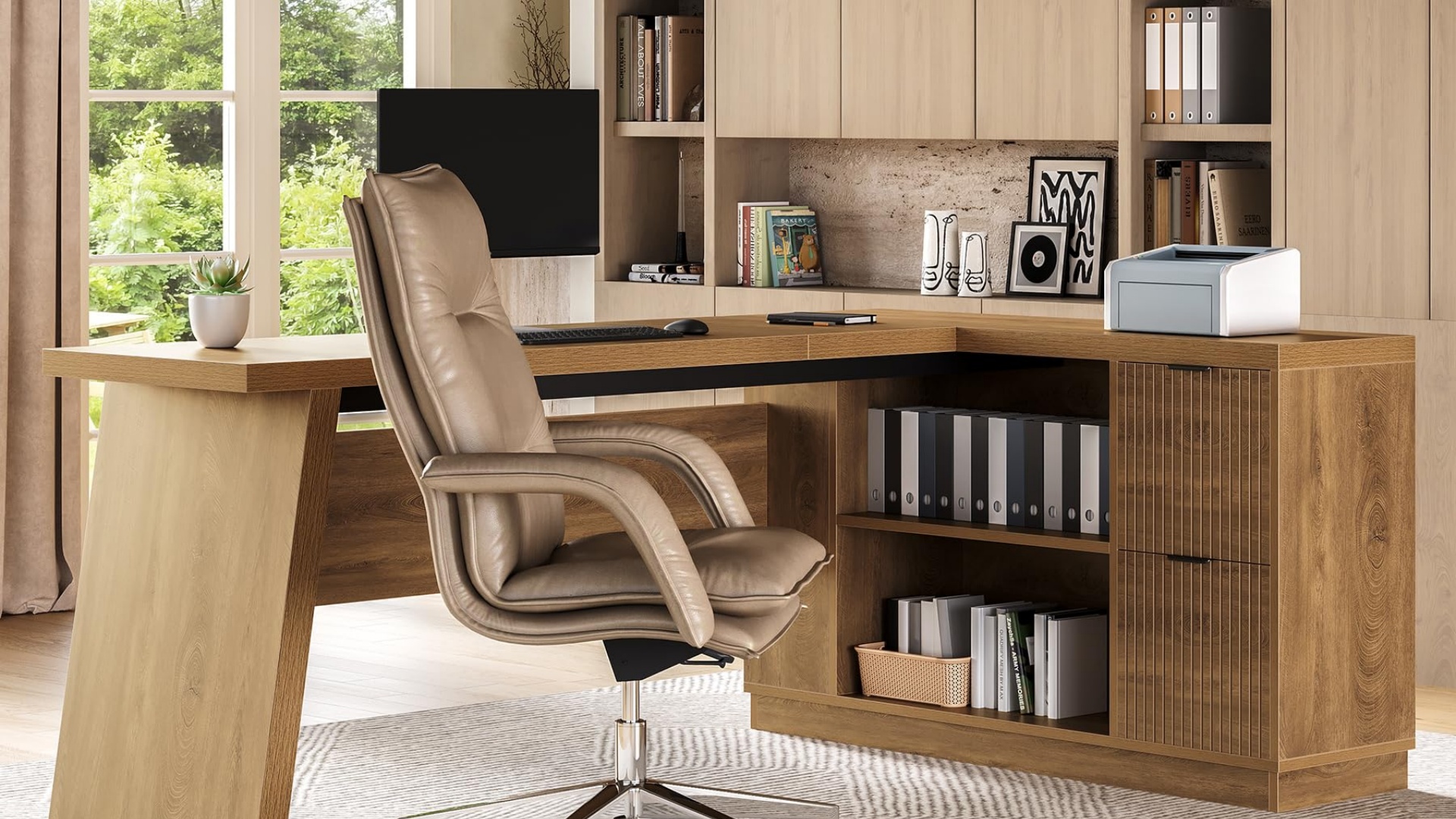
The product philosophy underlying Amazon Basics furniture emphasizes essential functionality stripped of aesthetic embellishment or premium materials. Desks provide stable work surfaces with basic cable management; chairs deliver adjustable seating with fundamental ergonomic features; storage units offer practical organization without decorative elements. This utilitarian approach translates to aggressive pricing positioning—Amazon Basics furniture typically costs twenty to forty percent less than comparable IKEA products and substantially less than Wayfair's mid-range offerings.
Prime membership integration provides Amazon Basics furniture with distribution advantages competitors cannot match. Free two-day shipping on most items eliminates delivery charges that significantly inflate furniture costs when purchased from alternatives. The compressed delivery timeframes enable remote workers to establish functional home offices within days rather than weeks, valuable for employees transitioning rapidly to remote arrangements or relocating to new residences. The predictable delivery experience leveraging Amazon's sophisticated logistics infrastructure provides reliability sometimes lacking in furniture-specific retailers managing their own distribution networks.
Amazon's customer service infrastructure and return flexibility extend to furniture purchases despite the category's inherent challenges. The company's bias toward customer satisfaction means damaged, defective, or disappointing furniture purchases generally result in hassle-free returns or refunds. The A-to-Z guarantee protecting marketplace purchases provides additional consumer protection when buying third-party brands through Amazon rather than Amazon Basics products directly. This customer service safety net reduces purchase risk, encouraging experimentation with furniture options that might otherwise seem too uncertain.
The Amazon Basics desk lineup includes simple rectangular work surfaces, L-shaped corner configurations, and computer desks with keyboard trays and monitor shelves. Materials predominantly feature engineered wood with laminate finishes and powder-coated steel frames. Construction quality aims for "good enough" rather than exceptional—desks withstand typical home office use but show wear more rapidly than premium alternatives. Assembly requirements remain moderate, generally requiring one to two hours with basic tools. The straightforward designs minimize assembly complexity compared to IKEA's sometimes-Byzantine instruction manuals.
Task seating from Amazon Basics follows similar utilitarian principles. The mid-back and high-back office chairs incorporate mesh backing for breathability, padded seats with fabric or faux leather upholstery, pneumatic height adjustment, tilt mechanisms, and fixed or adjustable armrests. Ergonomic sophistication remains basic—these chairs provide functional seating for daily use but lack the advanced adjustment capabilities and premium materials characterizing high-end ergonomic chairs. Users report adequate comfort for typical eight-hour workdays though not necessarily the all-day support intensive computer users require.
Quality expectations for Amazon Basics furniture should calibrate toward short-to-medium term utility rather than decade-long durability. Most products deliver three to five years of regular service before showing significant wear, structural weakness, or functional degradation. This lifecycle proves entirely acceptable given the modest initial investment—replacing an Amazon Basics desk after four years costs less than purchasing premium alternatives upfront. For remote workers uncertain about long-term work arrangements or anticipating relocations, Amazon Basics provides functional solutions without substantial capital commitment.
The customer review ecosystem surrounding Amazon products provides extensive purchasing guidance similar to Wayfair's review infrastructure. Popular Amazon Basics furniture items accumulate thousands of reviews detailing real-world experiences, assembly challenges, quality observations, and longevity reports. The review volume and detail enable prospective buyers to develop realistic expectations and identify systematic issues versus isolated incidents. Verified purchase indicators and helpful vote mechanisms surface the most useful reviews, streamlining information gathering.
However, Amazon Basics furniture suffers notable limitations for home office applications. Design aesthetics remain decidedly basic, with furniture appearance clearly communicating budget positioning. For remote workers hosting video conferences or maintaining client-visible home offices, Amazon Basics furniture may project unprofessional impressions. The material quality and construction techniques prioritize cost efficiency over durability, with particleboard, thin laminates, and lightweight metal components showing wear relatively quickly. Ergonomic performance of seating options, while adequate for casual users, falls short for individuals spending ten-plus hours daily at computers or those with specific orthopedic requirements.
| Amazon Basics Product | Key Features | Price Range | Typical Lifespan |
Classic Office Desk | Simple rectangular design, 3 sizes, basic cable management | $89 - $159 | 3-4 years with regular use |
Mid-Back Mesh Chair | Breathable mesh, height adjustment, tilt mechanism | $69 - $119 | 2-3 years with daily use |
High-Back Executive Chair | Padded seat, lumbar support, swivel base | $129 - $189 | 3-4 years with regular use |
2-Drawer File Cabinet | Locking mechanism, letter/legal size, wheels | $89 - $139 | 4-5 years with regular use |
5-Shelf Bookcase | Adjustable shelves, simple assembly, multiple finishes | $59 - $99 | 4-5 years with regular use |
Different remote work circumstances, budget realities, and longevity expectations require distinct approaches to home office furniture selection. Understanding how IKEA, Wayfair, and Amazon Basics align with various user profiles enables more strategic decision-making that optimizes value delivery for specific situations.

Temporary or transitional remote workers uncertain about long-term work arrangements benefit from Amazon Basics' minimal investment requirements and Prime delivery convenience. Employees testing remote work viability, contractors between assignments, or individuals anticipating relocations within one to two years should prioritize low-cost functionality over premium quality or aesthetic refinement. The ability to establish functional workspaces within days and minimal financial commitment makes Amazon Basics ideal for these scenarios.
Budget-constrained permanent remote workers balancing cost limitations with quality expectations often find IKEA offerings optimal. The brand delivers substantially better construction quality and aesthetic appeal than Amazon Basics while maintaining significantly lower pricing than premium alternatives. Remote workers committed to home offices for five-plus years gain sufficient durability to justify IKEA's moderate price premiums over Amazon Basics, while the design quality supports professional video conferencing and client interactions that budget furniture undermines.
Style-conscious remote workers prioritizing aesthetic integration with existing home décor find Wayfair's marketplace breadth invaluable. The platform's extensive selection enables precise style matching—mid-century modern furniture for retro-inspired homes, industrial designs for urban loft environments, traditional pieces for classic interiors. This aesthetic flexibility proves particularly important for remote workers whose home offices occupy living spaces rather than dedicated rooms, requiring furniture that functions professionally while coordinating visually with residential furnishings.
Ergonomic-priority users spending intensive hours at computers benefit from allocating budgets strategically across brands. Invest in quality task seating from Wayfair's mid-range ergonomic chair selections while accepting IKEA or Amazon Basics desks and storage solutions. Task chairs directly impact physical comfort and long-term health, justifying premium investments, while desks primarily need stable surfaces and adequate dimensions—functions budget options deliver competently. This hybrid approach maximizes ergonomic performance within budget constraints.
Small business owners furnishing multiple home office workstations face different optimization calculations. IKEA's bulk purchase capabilities and consistent product availability support multi-workstation deployments more effectively than sourcing varied products through Wayfair. The ability to purchase multiple identical items establishes visual consistency across remote team members' backgrounds during video conferences. Amazon Basics' Prime shipping benefits diminish when purchasing furniture quantities exceeding free shipping thresholds, making IKEA's in-store purchasing more cost-effective for volume buyers.
Sustainability-conscious remote workers evaluating environmental impacts find meaningful differences between brands. IKEA maintains relatively robust sustainability commitments including responsible forestry programs, renewable material utilization, and product lifecycle planning. Wayfair's marketplace model complicates environmental assessment given the thousands of manufacturers involved, though filtering tools enable identification of sustainably-produced options. Amazon Basics emphasizes cost efficiency over environmental considerations, with products generally reflecting conventional manufacturing practices prioritizing expense minimization.
Assembly-averse customers willing to pay premiums for convenience should leverage Wayfair's white-glove delivery services or select fully-assembled furniture options available through the platform. IKEA and Amazon Basics predominantly require customer assembly, creating multi-hour time commitments for desk and storage unit construction. For professionals whose time carries high opportunity costs, paying delivery premiums to avoid assembly labor provides genuine economic value beyond mere convenience.
The upgrade pathway many remote workers follow suggests strategic brand sequencing. Initial home office establishments using Amazon Basics furniture provide functional workspaces during adjustment periods when remote work arrangements remain uncertain. After confirming long-term remote status, workers upgrade to IKEA furniture delivering improved quality and aesthetics at moderate cost increases. Finally, established remote workers with stable arrangements invest selectively in premium items from Wayfair's higher-end selections—a quality ergonomic chair, a solid wood desk, or custom storage solutions—while maintaining IKEA or Amazon Basics pieces for secondary functions.
| Remote Work Scenario | Recommended Primary Brand | Strategic Rationale | Suggested Exceptions |
Temporary (6-18 months) | Amazon Basics | Minimal investment, rapid deployment | None—prioritize budget efficiency |
Permanent Budget-Focused | IKEA | Optimal quality-to-price ratio | Premium task chair from Wayfair |
Aesthetic-Priority | Wayfair | Maximum style variety and customization | None—worth the investment |
Ergonomic-Critical | Wayfair (chairs) + IKEA (other) | Strategic allocation to high-impact items | Consider premium chair specialists |
Multi-Workstation | IKEA | Consistency, bulk availability | Amazon Basics for non-visible items |
Quick Setup Required | Amazon Basics | Fastest delivery via Prime shipping | Wayfair with expedited delivery premium |
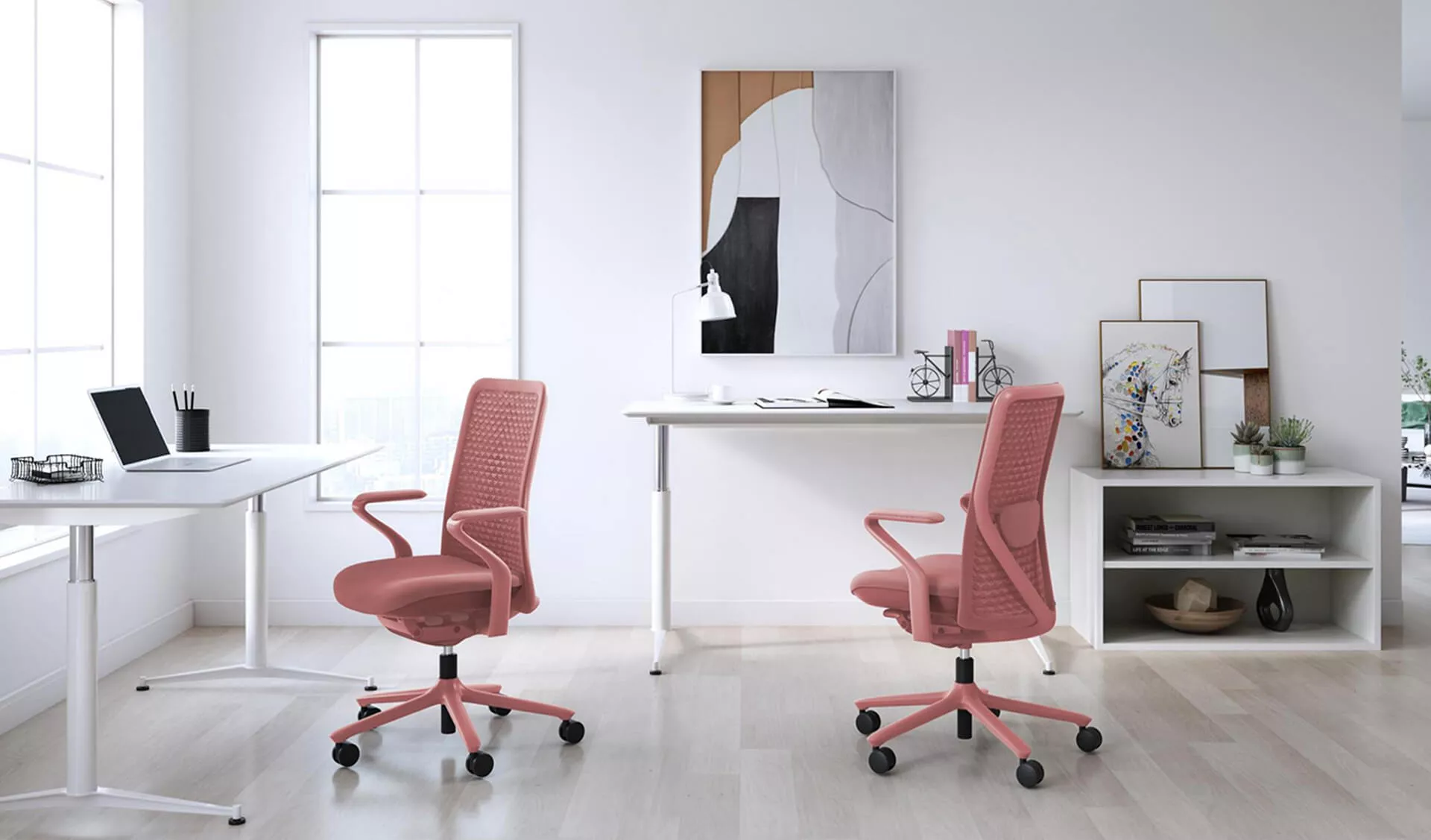
Adjustable Rolling Chair for Office
The furniture acquisition experience extends well beyond product selection to encompass delivery logistics, assembly requirements, and post-purchase support. These operational factors significantly influence overall satisfaction and total cost of ownership, warranting careful evaluation when choosing between IKEA, Wayfair, and Amazon Basics.
Assembly complexity varies considerably across brands and product categories. IKEA furniture requires customer assembly for virtually all products, with complexity ranging from simple bookcases achievable in thirty minutes to elaborate desk systems demanding two or three hours and two-person teams. The company's pictorial instruction manuals minimize language barriers but sometimes lack clarity at critical assembly steps. Hardware organization proves crucial—losing small screws or mixing similar-but-not-identical components creates frustrating delays. Amazon Basics assembly requirements generally prove less complex than IKEA equivalents, with simpler designs featuring fewer components. Wayfair products span the spectrum from fully-assembled delivery to complex customer assembly, depending on manufacturer and product category.
Tool requirements typically include Phillips-head screwdrivers, Allen wrenches, and occasionally hammers for securing backing panels. IKEA includes necessary Allen wrenches with products, though investing in a quality screwdriver set and power drill significantly accelerates assembly processes. Amazon Basics similarly includes basic tools, though their quality rarely justifies keeping them for future use. Wayfair products from various manufacturers show inconsistent tool inclusion, making tool kit ownership advisable.
Delivery timeframes reflect each brand's distribution infrastructure. Amazon Basics leverages the company's logistics network to deliver most furniture within two to five days for Prime members, with some items qualifying for next-day delivery in metropolitan areas. IKEA delivery schedules typically extend one to two weeks from order placement, though in-store purchases enable immediate possession of in-stock items that fit in personal vehicles. Wayfair delivery windows vary by product and manufacturer, generally ranging from one to three weeks, with expedited options available at premium costs. The white-glove delivery services Wayfair offers require appointment scheduling, potentially extending overall timelines but providing assembled, positioned furniture.
Damage during shipping remains an unfortunate reality of furniture commerce, with large, heavy items suffering impacts during multi-stage transportation. All three brands maintain customer-favorable policies addressing delivery damage, generally offering replacement, partial refunds, or full refunds without return requirements for significantly damaged items. However, navigating these processes consumes time and delays workspace functionality. Thoroughly inspect deliveries before signing for receipt and document any damage immediately with photographs supporting claims.
Return processes differ meaningfully across brands. Amazon's infrastructure handles furniture returns through similar processes used for smaller products, generating prepaid return labels and arranging pickup for large items. IKEA requires customers transport returns to physical stores—manageable for small items but challenging for assembled furniture. Wayfair generally processes returns through manufacturer-specific procedures, with experiences varying considerably. All three brands impose time limitations on returns, typically thirty days from delivery.
Customer service accessibility and quality directly impact problem resolution experiences. Amazon's comprehensive support infrastructure addresses furniture issues through familiar customer service channels, with representatives empowered to authorize refunds or replacements relatively quickly. IKEA customer service operates through in-store assistance, phone support, and online chat, with response quality varying by location and representative knowledge. Wayfair maintains dedicated customer service teams, though resolution processes sometimes involve coordination between Wayfair and individual manufacturers, potentially extending problem resolution timeframes.
Warranty coverage provides long-term protection varying significantly across brands. IKEA offers product-specific warranties ranging from one to ten years depending on item category, with desks and storage typically covered for ten years. Amazon Basics furniture generally includes one-year limited warranties covering manufacturing defects but excluding normal wear. Wayfair warranty terms vary by manufacturer, ranging from thirty days to lifetime coverage, requiring careful review of specific product warranty documentation before purchasing.
| Operational Factor | IKEA | Wayfair | Amazon Basics |
Average Delivery Time | 1-2 weeks (or immediate in-store) | 1-3 weeks (varies by manufacturer) | 2-5 days (Prime members) |
Assembly Requirement | Customer assembly for virtually all items | Varies—option for white-glove service | Customer assembly for most items |
Assembly Complexity | Moderate to complex | Varies by manufacturer | Generally straightforward |
Return Process | Transport to physical store | Manufacturer-specific, varies widely | Amazon's standard return infrastructure |
Typical Warranty | 1-10 years (product-dependent) | Varies by manufacturer | 1 year limited warranty |
Customer Service | Store, phone, chat—mixed quality | Dedicated teams, resolution varies | Amazon's comprehensive infrastructure |
Selecting optimal home office furniture from IKEA, Wayfair, and Amazon Basics requires matching brand strengths to individual circumstances, priorities, and constraints. Amazon Basics serves temporary situations and extreme budget limitations through minimal investment and rapid deployment, accepting quality compromises in exchange for functional adequacy. IKEA delivers the strongest value proposition for permanent home offices balancing quality, aesthetics, and budget considerations, providing furniture that serves reliably for five to ten years while maintaining professional appearance. Wayfair's marketplace breadth addresses specialized requirements including aesthetic preferences, ergonomic priorities, and specific dimensional constraints that standardized retail selections cannot accommodate.
The strategic approach many successful remote workers employ combines brands based on item category rather than singular brand loyalty. Invest in quality task seating from Wayfair's ergonomic specialists, recognizing that chair selection directly impacts daily comfort and long-term health. Select desks from IKEA's refined collections providing functional work surfaces with aesthetic appeal at moderate costs. Supplement with Amazon Basics accessories and secondary storage where premium quality provides minimal incremental value. This hybrid strategy optimizes budget allocation toward highest-impact investments while accepting economy solutions where appropriate.
The remote work transformation continues evolving, with home offices transitioning from temporary expedients to permanent professional infrastructure. Furniture investments made today will influence your productivity, physical comfort, and professional presentation for years ahead. Allocate sufficient time for careful evaluation, realistic assessment of your actual requirements versus aspirational preferences, and strategic budget deployment maximizing value delivery. Whether your priorities emphasize rapid deployment, aesthetic integration, ergonomic performance, or cost minimization, understanding how IKEA, Wayfair, and Amazon Basics address these factors differently enables informed decisions supporting your remote work success.
Amazon Basics furniture typically delivers three to five years of regular service before showing significant wear or structural issues, which proves entirely acceptable given modest initial investments. IKEA furniture generally serves five to ten years with proper care, offering substantially better longevity justifying moderate price premiums. Wayfair furniture lifespans vary dramatically based on manufacturer and price point, ranging from three years for budget options to fifteen-plus years for premium selections. Set realistic expectations based on purchase price—furniture costing under two hundred dollars rarely outlasts five years of daily use.
Strategic brand mixing actually optimizes budget allocation while maintaining aesthetic coherence. Focus on coordinating finish colors, material palettes, and style categories rather than brand consistency. Select all wood-finish pieces in matching stains—walnut, oak, or white—regardless of manufacturer. Maintain style consistency by choosing exclusively modern, traditional, or industrial aesthetics across all furniture. Prioritize visible client-facing items like desks and primary seating for higher-quality investments while accepting budget solutions for storage and secondary pieces less prominent in video conference backgrounds.
The most frequent errors include failing to organize hardware before starting, mixing similar-but-different screws or bolts, over-tightening connections during initial assembly that prevents alignment adjustments, skipping instruction steps perceived as unnecessary, and attempting solo assembly of furniture designed for two-person teams. Prevent these mistakes by sorting all hardware first, reading complete instructions before starting, hand-tightening connections initially with final tightening only after verifying alignment, following every instruction step regardless of perceived importance, and recruiting assistance for large items.
Calculate daily computer usage hours and multiply by expected furniture service years to determine total sitting hours. If you spend eight-plus hours daily at your desk, quality ergonomic seating delivers measurable health benefits justifying investments up to five hundred dollars. Consider existing physical issues—chronic back pain, neck strain, or circulation problems significantly increase ergonomic furniture value propositions. Temporary remote workers expecting to return to office environments within eighteen months should accept basic ergonomics, while permanent remote workers benefit from premium ergonomic investments that distribute costs across many years of daily use.
Background furniture visible in video frames significantly influences professional perception. Prioritize clean, organized appearances over furniture quality—a simple Amazon Basics desk with minimal clutter projects more professionalism than premium furniture buried under papers. Position desks against neutral walls rather than cluttered areas. Select furniture finishes coordinating with wall colors creating cohesive backgrounds. Ensure adequate task lighting prevents shadowy, unprofessional video appearance. Consider artificial plants or minimal décor elements adding visual interest without distraction. The overall impression matters more than individual furniture pieces—maintain visual simplicity and organization.
Optimize for current requirements with modest future flexibility rather than over-investing in speculative future needs. Purchase desks accommodating your existing monitor configuration plus one additional screen maximum—not theoretical four-monitor arrays you may never implement. Select storage solutions for current document volumes plus twenty percent growth capacity. Avoid oversized furniture consuming excessive space based on theoretical future needs. Most remote workers overestimate rather than underestimate future requirements. If circumstances change dramatically, selling existing furniture and purchasing different pieces costs less than maintaining oversized furniture for years while awaiting needs that may never materialize.
No.1 Section, Heshan Industrial City, Heshan, Jiangmen, Guangdong, China
+86-137-0227-9783
Mon - Sat: 8 AM - 6PM
Sun: 11 AM - 3 PM